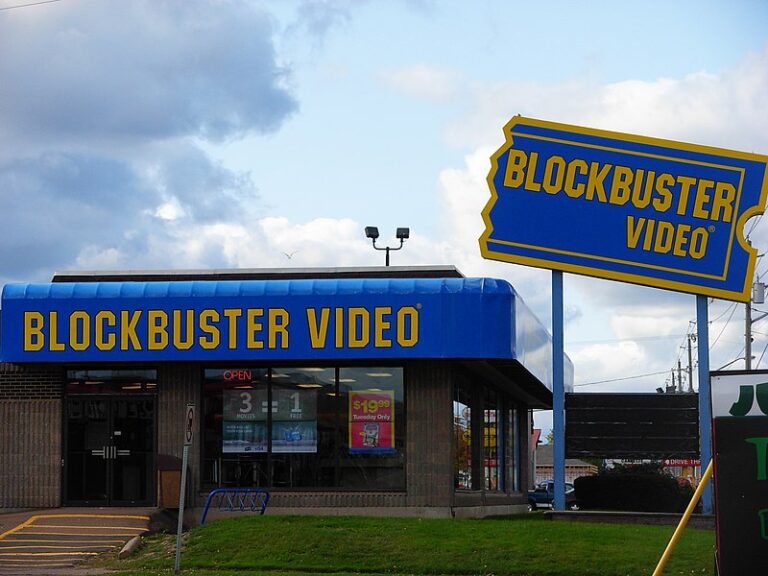Kodak’s Odyssey: Leadership Lessons from Vision to Innovation

Capturing Leadership Wisdom: Unveiling Kodak’s Rise and Fall
In the annals of corporate history, few stories are as captivating and instructive as the rise and fall of Kodak. For over a century, the name “Kodak” was synonymous with photography, capturing not just images but also the imagination of generations around the world. The Kodak narrative is a compelling saga that encapsulates the essence of leadership – from visionary brilliance to missed opportunities, from adaptation to resistance, and from triumphant success to humbling downfall.
As we delve into the depths of Kodak’s journey, we embark on a voyage that transcends the boundaries of time and industry. At the heart of this exploration lies a treasure trove of leadership wisdom, distilled from the experiences of those at the helm of this iconic company. These lessons resonate not only with business leaders but also with individuals seeking to navigate the uncharted waters of leadership in an ever-evolving world.
The saga begins with George Eastman, a visionary who believed that photography should be accessible to all, not just a select few with technical know-how. Eastman’s audacious vision transformed photography from a complex process reserved for experts into a simple, joyful experience that anyone could partake in. This early example of leadership showcased the power of a clear vision, driving innovation to create products that resonate with the masses.
As the journey unfolds, we witness Kodak’s groundbreaking “Kodak moment,” a phrase that not only entered the lexicon but also underscored the company’s commitment to capturing life’s fleeting, beautiful instances. The launch of the Brownie camera marked a watershed moment, democratizing photography like never before. This pivotal juncture speaks volumes about the courage to innovate, the readiness to take calculated risks, and the foresight to understand the changing needs of consumers.
However, no story of leadership is devoid of challenges, and Kodak’s journey is no exception. The company faced formidable competition from Fuji, a Japanese rival that mirrored Kodak’s determination to shape the future of photography. Amid this rivalry, the emergence of digital technology presented both an opportunity and a threat. Kodak’s resistance to embracing digital photography, despite having developed the first digital camera in the 1970s, highlights the risks of complacency and the dangers of turning a blind eye to disruptive innovation.
Yet, within the Kodak narrative, there are also tales of resilience and leadership perseverance. The struggles faced in a rapidly changing landscape underscore the importance of a dynamic organizational culture, open lines of communication, and an ability to navigate shifts with grace and agility. By examining these facets of the Kodak story, we unearth timeless principles that can guide leaders in any era, reminding us that while technological progress is relentless, the core tenets of leadership remain unwavering.
In the following sections, we will delve deeper into the intricate tapestry of leadership lessons and stories that Kodak weaves. From its beginnings as a vision-driven endeavor to its eventual downfall due to missed opportunities, we will extract insights that continue to hold relevance for leaders navigating today’s complex, ever-shifting business landscape. As we traverse the highs and lows of Kodak’s journey, we will illuminate the threads of wisdom that can guide leaders towards making informed decisions, fostering innovation, embracing change, and ultimately steering their organizations towards sustained success.
Join us in this voyage through time and leadership as we explore the remarkable tale of Kodak – a narrative that echoes with lessons, stories, and profound insights that transcend industry and epoch.
Vision and Adaptability: Lessons from Kodak’s Beginnings
George Eastman’s Vision: Pioneering Photography for the Masses
At the core of Kodak’s journey lies the indomitable vision of its founder, George Eastman. In an era when photography was cumbersome and complex, Eastman saw a world where capturing moments could be as simple as pressing a button. His visionary outlook birthed not just a company, but an entire industry transformation. By popularizing the slogan “You press the button, we do the rest,” Eastman declared his commitment to making photography accessible to all, irrespective of their technical prowess.
Eastman’s leadership demonstrated the power of a visionary compass that could navigate uncharted waters with confidence. He possessed the clarity to see beyond the constraints of the present and the courage to manifest his vision into reality. This visionary outlook continues to resonate in modern leadership, highlighting the importance of setting a compelling direction and inviting others to rally around a shared purpose.
Embracing Change: Transition from Dry Plates to Flexible Film
While George Eastman’s vision formed the bedrock, Kodak’s journey of leadership was also marked by its willingness to adapt and evolve. The transition from glass plate negatives to flexible film marked a turning point that showcased Kodak’s ability to embrace change in response to market demands. The introduction of flexible film revolutionized photography, making it more convenient, portable, and accessible to a wider audience.
This transition underscores the crucial leadership skill of adaptability – the art of recognizing shifting landscapes and proactively aligning strategies with evolving circumstances. Leaders who cultivate adaptability empower their organizations to thrive in an ever-changing environment. Kodak’s successful pivot from dry plates to flexible film teaches us that holding on to legacy systems can inhibit growth, while embracing change fosters innovation and opens new avenues for advancement.
Key Takeaways
-
Importance of a Visionary Leader: George Eastman’s unwavering commitment to democratizing photography showcases the profound impact visionary leadership can have on an organization’s direction and culture. A visionary leader provides a compelling purpose that guides decision-making and inspires a sense of shared mission.
-
Adaptability as a Cornerstone of Leadership: The transition from dry plates to flexible film highlights the significance of adaptability in leadership. Leaders who can recognize shifts in the external environment and adjust strategies accordingly position their organizations for sustained success.
In the grand tapestry of leadership wisdom, Kodak’s early journey teaches us that a compelling vision fuels innovation and transformation. It also demonstrates that an organization’s ability to adapt and evolve in response to changing circumstances is vital for its long-term survival. As we move forward in this exploration of Kodak’s leadership lessons, we’ll unearth further insights that draw from both triumphant victories and humbling missteps on its path.
Innovation and Risk-Taking: The Kodak Moment
Birth of the “Kodak Moment” Catchphrase
The story of Kodak’s leadership journey is not just about technology; it’s about capturing moments that define the human experience. The iconic “Kodak moment” catchphrase emerged as a testament to the company’s ability to connect emotionally with its customers. This catchphrase transcended mere marketing jargon – it encapsulated the essence of cherishing life’s fleeting instants through photography. The ability to cultivate such a profound emotional connection with consumers reflects the art of visionary storytelling, a skill that continues to drive successful leaders today.
Launching the Brownie Camera: Making Photography Accessible
The launch of the Brownie camera in 1900 stands as a pivotal example of Kodak’s commitment to democratizing photography. This affordable and easy-to-use camera empowered people from all walks of life to document their experiences and share them with the world. The Brownie not only drove Kodak’s market dominance but also established the brand as a symbol of accessible innovation. This transformational step reinforces the idea that leadership goes beyond products – it’s about creating opportunities for others to participate and contribute to a shared journey.
Navigating Risks: Embracing New Technology (Color Film)
Innovation isn’t just about invention; it’s about recognizing the potential of emerging technologies. Kodak’s pioneering work in color film during the mid-20th century demonstrated the company’s commitment to pushing the boundaries of what photography could achieve. Despite initial skepticism and challenges, Kodak’s perseverance in perfecting color photography paid off, cementing its reputation as an industry innovator.
This journey highlights the crucial role of calculated risk-taking in leadership. Kodak’s willingness to invest resources and time into developing color film exemplifies the principle that calculated risks can lead to transformative rewards. Leaders who navigate these risks with a blend of vision, market insights, and strategic planning position their organizations at the forefront of innovation.
Key Takeaways
-
Innovation as a Catalyst for Growth: The birth of the “Kodak moment” catchphrase and the launch of the Brownie camera underscore the importance of innovation in driving growth. Leaders who foster a culture of innovation inspire teams to push boundaries, resulting in products and services that resonate deeply with customers.
-
Calculated Risk-Taking and its Role in Leadership: Kodak’s journey into color photography reveals the significance of taking calculated risks in pursuit of innovation. Leaders who are willing to embrace new technologies, even in the face of uncertainty, can position their organizations as industry pioneers.
As we immerse ourselves in the second act of Kodak’s leadership narrative, we find ourselves amidst a symphony of creativity, risk-taking, and customer-centric thinking. The “Kodak moment” captures not only images but also the essence of leadership traits that inspire others to envision a better future and transform dreams into reality. This journey through Kodak’s history reinforces the notion that visionary leadership and calculated innovation are essential for maintaining relevance and success in a rapidly evolving world.
Leadership Resilience: Challenges Faced by Kodak
Competition Emerges: Fuji’s Entry into the Market
No leadership journey is devoid of challenges, and Kodak’s narrative is marked by the emergence of formidable competition in the form of Fuji. The entrance of a Japanese rival into the global photography market disrupted Kodak’s dominance, prompting leaders to confront a new reality. This phase of the story emphasizes the importance of vigilance and the need to recognize competitive threats before they escalate into insurmountable challenges.
Kodak’s response to Fuji’s competition showcases the value of adaptability. The company had to adjust its strategies, explore new markets, and innovate to regain its competitive edge. This demonstrates that leadership isn’t just about thriving in the status quo; it’s about proactively shaping the future by anticipating and responding to shifts in the competitive landscape.
Digital Disruption: Resisting the Shift to Digital Photography
One of the most significant junctures in Kodak’s leadership journey was the digital revolution. As digital photography gained momentum, Kodak found itself at a crossroads. The company had developed one of the earliest digital cameras in the 1970s but struggled to embrace this disruptive technology fully. The reluctance to transition from film to digital photography is a poignant example of how leaders’ attachment to past successes can blind them to emerging trends and innovation.
Kodak’s hesitance to fully embrace digital photography serves as a cautionary tale for leaders in any industry. Resisting change, even when it’s evident, can lead to missed opportunities and gradual irrelevance. This phase of Kodak’s journey underscores the importance of letting go of legacy systems when they no longer align with the changing needs of the market and consumers.
Failure to Pivot: Missed Opportunities and Leadership Blind Spots
Kodak’s decline wasn’t solely due to external pressures; it was exacerbated by internal decision-making processes. The company’s leadership, entrenched in the film-based mindset, failed to grasp the profound implications of the digital shift. Missed opportunities to invest in digital technology, combined with an inability to pivot effectively, culminated in a scenario where Kodak’s once-monolithic market share crumbled.
This phase of Kodak’s journey illustrates the significance of organizational agility and leadership foresight. Leaders must cultivate an environment that encourages critical thinking, openness to change, and a willingness to challenge assumptions. Addressing leadership blind spots and fostering a culture of continuous learning and adaptation can prevent an organization from falling into complacency and eventual decline.
Key Takeaways
-
Recognizing and Responding to Competitive Threats: The emergence of Fuji as a formidable competitor underscores the importance of vigilance and adaptability in leadership. Leaders who anticipate and respond to competitive challenges can navigate their organizations towards sustained success.
-
The Danger of Clinging to the Status Quo: Kodak’s hesitance to embrace digital photography serves as a stark reminder of the dangers of clinging to legacy systems and resisting change. Leaders who acknowledge the need for evolution and innovation can position their organizations for longevity.
-
Navigating Leadership Blind Spots: The failure to pivot effectively during the digital revolution highlights the importance of addressing leadership blind spots and fostering an agile, learning-oriented organizational culture. Leaders who encourage open dialogue and proactive adaptation can navigate disruptions more effectively.
As we explore the trials and tribulations faced by Kodak, we unearth pivotal leadership lessons that underscore the need for vigilance, adaptability, and a willingness to challenge established norms. The ability to navigate external challenges and internal blind spots is a testament to the resilience required of leaders in an ever-changing business landscape. In the next segment of Kodak’s narrative, we’ll delve deeper into the role of organizational culture and communication in shaping leadership outcomes.
Organizational Culture and Communication: The Kodak Case Study
Corporate Culture: The Role of Hierarchy and Innovation
Within Kodak’s storied history, the dynamics of its corporate culture played a pivotal role in shaping leadership outcomes. The company’s hierarchical structure, while once conducive to efficient operations, inadvertently stifled the flow of innovative ideas and cross-functional collaboration. This aspect of Kodak’s journey demonstrates the delicate balance leaders must strike between maintaining a structured hierarchy and fostering an environment that encourages creative thinking and initiative.
The lesson here is that a culture that promotes innovation is crucial for sustaining an organization’s competitive advantage. Leaders must create an atmosphere where employees feel empowered to voice their ideas, experiment with new approaches, and collaborate across departments. A hierarchical structure that discourages open communication can hinder the very innovation necessary for an organization’s growth and adaptability.
Communication Breakdown: Disconnect Between Leadership and Employees
A critical juncture in Kodak’s leadership narrative was the communication breakdown between leadership and employees during the digital transition. The resistance to digital transformation was compounded by a lack of effective communication regarding the rationale behind the decisions being made. This disconnect eroded trust, created confusion, and fueled resistance among employees who felt detached from the strategic direction.
Leadership communication is more than just transmitting information; it’s about fostering a sense of shared purpose and alignment. Clear and transparent communication helps employees understand the reasons behind strategic choices and invites them to be active participants in the organization’s journey. Kodak’s missteps underscore the importance of establishing effective channels of communication that bridge the gap between leadership decisions and employee engagement.
Resistance to Change: The Impact on Organizational Dynamics
Kodak’s struggle to embrace digital photography showcased the human resistance to change, a phenomenon inherent in many organizations. Employees often find comfort in familiar routines and processes, and disrupting these norms can lead to apprehension and pushback. Kodak’s challenges in adapting to digital innovation provide a case study in understanding the psychological aspects of change and how they intersect with leadership decisions.
This phase of Kodak’s journey reveals that effective leadership involves not just championing change but also facilitating a supportive environment for employees to transition. Leaders who acknowledge resistance, address concerns, provide training, and communicate the benefits of change can foster a more seamless transition. Navigating resistance requires empathy, patience, and an unwavering commitment to a shared vision.
Key Takeaways
-
Nurturing an Adaptable and Open Culture: The dynamics of Kodak’s corporate culture highlight the importance of nurturing an environment that encourages innovation and cross-functional collaboration. Leaders who prioritize a culture that embraces change and values diverse perspectives can fuel organizational agility.
-
Effective Communication to Align Vision and Execution: Kodak’s communication breakdown underscores the critical role of transparent and clear communication in leadership. Leaders who communicate the “why” behind decisions and create channels for open dialogue can foster alignment and trust.
-
Navigating Resistance with Empathy: Kodak’s challenges with embracing digital change emphasize the need for leaders to address employee resistance with empathy and patience. Acknowledging concerns and providing support can facilitate a smoother transition and mitigate disruption.
As we delve into the complexities of organizational culture and communication within Kodak, we uncover pivotal leadership lessons that transcend industries. Leadership isn’t just about making strategic decisions; it’s also about cultivating an environment that fosters innovation, encourages open communication, and supports employees as they navigate change. The insights drawn from Kodak’s experiences offer a roadmap for leaders seeking to create cultures that thrive in a rapidly evolving business landscape.
Downfall and Lessons of Kodak
Kodak’s Decline: Bankruptcy and the Shift to Digital Photography
Kodak’s leadership narrative takes a somber turn as we delve into the period of its decline, marked by its eventual bankruptcy and the irrevocable shift to digital photography. The company that once defined photography found itself grappling with the very technological disruption it had inadvertently failed to fully embrace. This phase serves as a stark reminder that even industry giants are not immune to the forces of change and innovation.
Kodak’s downfall serves as a cautionary tale for leaders across the spectrum. It underscores the urgency of staying attuned to industry trends and technological advancements. Complacency, regardless of past successes, can lead to dire consequences. Leaders must constantly evaluate their strategies, make tough decisions when required, and evolve their business models to remain relevant.
Ignoring Disruptive Innovation: A Cautionary Tale
Kodak’s story is a prime example of the dangers of ignoring disruptive innovation. The digital revolution, once perceived as a niche trend, transformed the photography landscape with unparalleled speed. Kodak’s initial dismissal of the digital camera as a mere novelty, despite having developed one decades earlier, exemplifies how leaders can become victims of their own success, blinded by their established achievements.
This phase reinforces the importance of a learning-oriented leadership approach. Leaders who continuously educate themselves about emerging technologies and market shifts can better anticipate disruptive trends. By fostering a culture of curiosity and adaptability, organizations can equip themselves to navigate the ever-changing currents of the business world.
Leadership Accountability: The Role of Top Executives
Kodak’s decline also highlights the pivotal role of top executives in shaping an organization’s destiny. The decisions made at the highest levels can have far-reaching implications, affecting not only the company’s future but also the livelihoods of its employees and the loyalty of its customers. The leadership accountability exhibited during times of upheaval becomes a defining characteristic of the organization’s legacy.
Leaders must recognize the gravity of their decisions and their impact on the organization’s stakeholders. The Kodak narrative underscores the importance of fostering a culture of responsibility, where leaders are willing to make tough choices for the greater good, even when those choices challenge established norms.
Key Takeaways
-
Acknowledging the Significance of Digital Disruption: Kodak’s decline serves as a stark reminder of the monumental impact of digital disruption on traditional industries. Leaders who fail to embrace or adapt to new technologies risk being left behind in an evolving market.
-
Leadership Responsibility for Long-Term Strategy: The cautionary tale of Kodak reinforces the role of top executives in shaping an organization’s future. Leaders must demonstrate accountability, make strategic decisions that align with the organization’s goals, and be willing to confront challenges head-on.
As we confront the decline of Kodak, we’re reminded that even the most influential organizations can falter if leadership fails to anticipate change and act accordingly. In this pivotal phase of Kodak’s journey, we find the impetus to embrace a leadership approach that values foresight, agility, and accountability. The lessons learned from Kodak’s fall provide a blueprint for leaders seeking to navigate uncertainty, respond to disruptive forces, and steer their organizations toward sustainable growth.
Legacy and Reflections: Leadership Lessons from Kodak
Kodak’s Enduring Impact on Photography and Technology
The story of Kodak, while marked by its rise and fall, leaves behind a lasting legacy that transcends its corporate journey. The innovations pioneered by Kodak fundamentally transformed photography, making it an accessible and cherished aspect of everyday life. The iconic “Kodak moment” continues to evoke feelings of nostalgia and connection, even in the digital age. This legacy stands as a testament to the power of visionary leadership and the ability to shape industries through innovation.
Kodak’s technological contributions also reverberate in the present day. The company’s pioneering work in digital photography laid the groundwork for the digital imaging technologies we rely on today. This underscores the enduring impact of innovation – even when a company faces challenges, its contributions can catalyze future developments that reshape industries.
Evolving Leadership: Applying Kodak’s Lessons in the Modern Context
The lessons drawn from Kodak’s journey are far from confined to the past. They remain an invaluable source of wisdom for leaders navigating the complexities of today’s rapidly changing business landscape. As technology accelerates and industries continue to transform, leaders must heed the lessons of Kodak to avoid repeating its mistakes.
The ability to balance tradition with innovation, to recognize the importance of adaptability, and to foster a culture of open communication and learning are all timeless principles that remain relevant. Applying these lessons enables leaders to anticipate disruptions, pivot effectively, and lead their organizations toward sustained success.
Lessons Learned: Summing up the Leadership Insights from Kodak
Kodak’s leadership narrative encapsulates a tapestry of lessons that encompass vision, innovation, adaptability, organizational culture, and more. As leaders reflect on Kodak’s story, they gain a deeper appreciation for the multifaceted nature of leadership and the interconnectedness of its principles.
Kodak’s journey compels leaders to question their approaches, challenge their assumptions, and constantly seek growth and improvement. The company’s successes and failures serve as a mirror in which leaders can reflect on their own practices, fostering a commitment to continuous learning and personal development.
Key Takeaways
-
Balancing Innovation with Core Values: Kodak’s legacy underscores the importance of aligning innovation with an organization’s core values. Visionary leadership that remains anchored in its principles can drive innovation without sacrificing its identity.
-
Adapting Leadership Strategies to Changing Landscapes: The lessons from Kodak emphasize the importance of adaptability in leadership. Leaders who proactively respond to change and navigate disruptions with resilience can position their organizations for long-term success.
In the final stretch of our exploration, we arrive at a junction of reflection and application. The legacy of Kodak impels us to not just observe from the sidelines but to internalize its lessons and integrate them into our leadership philosophies. The journey of Kodak offers a profound reminder that leadership is not a static destination, but an ongoing voyage of growth, discovery, and transformation.
Navigating Tomorrow’s Leadership: Insights from Kodak’s Legacy
As we draw the curtain on the saga of Kodak’s leadership journey, we find ourselves enriched with a treasure trove of insights that illuminate the path forward for leaders in the modern age. The tale of Kodak is more than a historical account – it is a dynamic narrative that resonates across time, industries, and leadership contexts. It serves as a compass that guides leaders through the intricate maze of challenges, opportunities, and transformations that define the contemporary business landscape.
The story of Kodak reaffirms the profound impact of visionary leadership – from George Eastman’s audacious vision to make photography accessible to all, to the creation of the iconic “Kodak moment” catchphrase that forever altered the way we perceive photography. These visionary sparks ignite innovation, shaping industries and influencing generations.
Yet, Kodak’s narrative also underlines the importance of adaptability – the readiness to evolve and embrace change in the face of technological disruptions. The company’s struggles with the digital revolution remind us that leaders who become ensnared in the allure of past successes risk missing the pivotal shifts that can redefine entire industries. The message is clear: leaders must cultivate the agility to pivot, recalibrate, and reinvent their strategies to thrive in an ever-evolving landscape.
Organizational culture and communication, two integral facets of leadership, emerge as transformative agents within the Kodak narrative. The interplay between hierarchical structures and innovation underscores the need for leaders to foster cultures that encourage experimentation, cross-functional collaboration, and the freedom to challenge the status quo. Effective communication bridges the gap between leadership decisions and employee engagement, fostering alignment and trust even during tumultuous times.
As we confront the decline of Kodak, we’re confronted with the sobering reminder that even industry giants can falter when leadership fails to anticipate change. The tale serves as a call to action for leaders to adopt a proactive stance, embracing an ethos of accountability and making strategic decisions that pave the way for a brighter future.
Kodak’s enduring legacy echoes through the corridors of time, inspiring leaders to apply its lessons in the modern context. The leadership journey of Kodak provides a holistic perspective that transcends industries, offering a profound roadmap for those who seek to navigate the uncharted waters of leadership. It beckons leaders to balance innovation with core values, embrace change, nurture agile cultures, and lead with a dedication to accountability and continuous learning.
In the end, Kodak’s story stands as a testament to the dynamic nature of leadership – a journey that intertwines vision, innovation, adaptability, culture, communication, and accountability. As leaders chart their courses through the complex currents of the business world, they can draw from the rich tapestry of Kodak’s experiences, learning from its triumphs and tribulations, and ultimately steering their organizations towards a future of lasting success.






